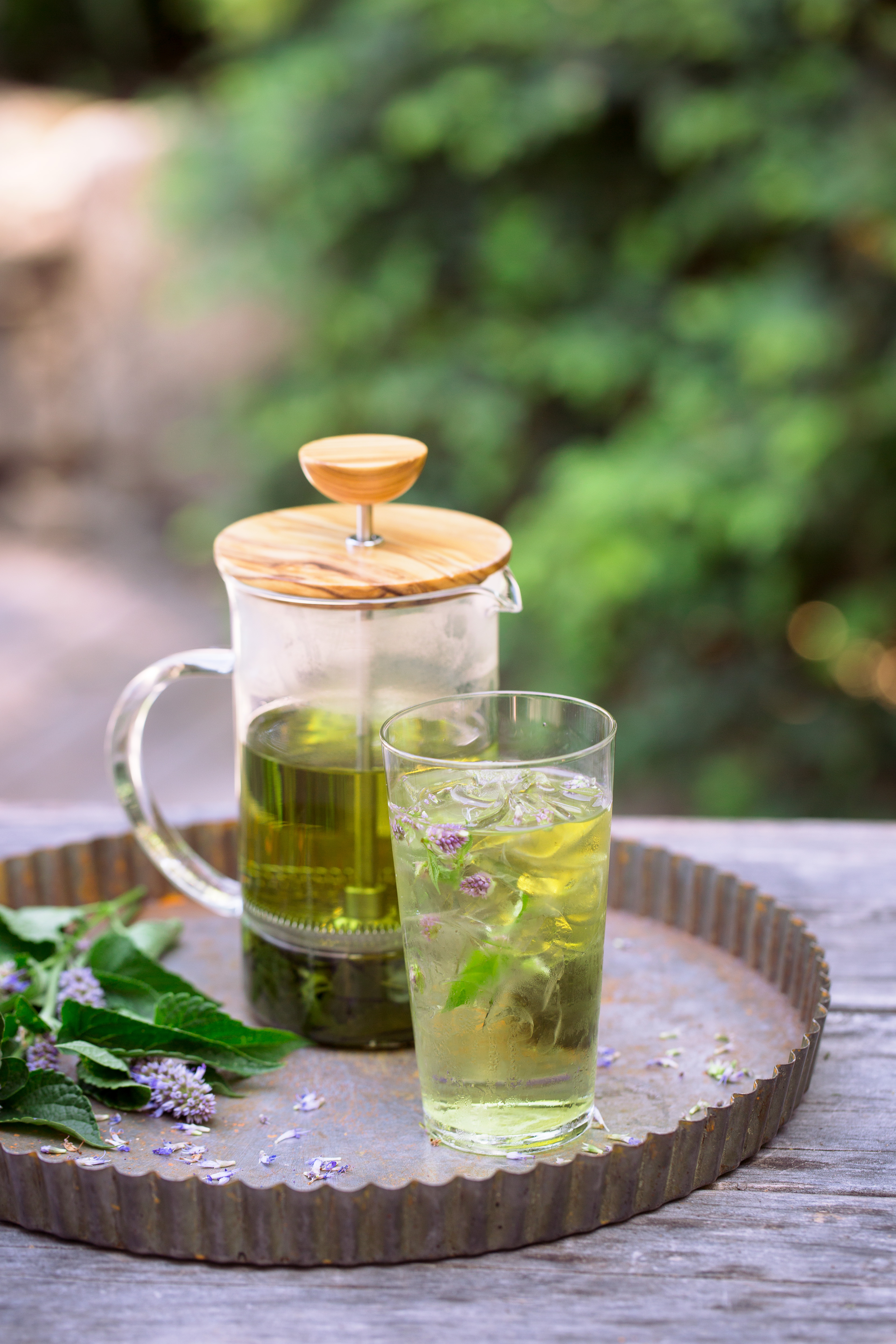
Grow Your Own Herbal Tea Garden
Get ready to embrace the latest addition to the locavore movement—homegrown teas.

As far as trends go, tea has some serious staying power. Across cultures, we’ve been obsessed with the stuff for centuries, whether as part of a formal ritual, a comforting sick-day elixir, or an icy reward after a hard day’s work tending the yard. It’s even better when the blend comes from your own homegrown herbs and edible flowers. To get going, Bay Area landscape designer Stefani Bittner suggests planting no-fuss varieties (many of which bring in pollinators and add colorful texture to any plot), learning a few special maintenance tips, and always harvesting for peak flavor. Most important, says Bittner, is to go organic—after all, you don’t want harsh chemical pesticides and fertilizers to end up in your brew. We’ve also come up with three foolproof and delicious recipe ideas that you can think of as starting points in planning your garden and creating your version of the perfect cup. From there, no drying or fancy equipment is needed to get sipping; a teapot or French press will do just fine. Or try an age-old brew method that requires nothing but sunshine.
Build a Tea Garden Base
For low-stress growing, start with these three resilient plants available at Morningsun Herb Farm.
- Chamomile. Annual with cheerful daisy-like flowers; a bedtime favorite.
- Anise hyssop. Hardy perennial with fragrant spikes of purple blossoms; hummingbirds will visit as much as you do.
- Lemon verbena. Sprawling, aromatic perennial; plant one and cut back often to keep its size in check.
Classic Flavors
Once you get your tea garden going, consider adding these herbs and flowers to match your ideal scent and taste. Just grow, trim, and steep—you’ll be enjoying your perfect cup in no time.
- Citrus: Lemon grass, lemon verbena, ‘Lemon Meringue’ scented geranium
- Mint: Calamint, ‘Petite Delight’ bee balm
- Earl Grey: Lemon bergamot (Monarda citriodora)
- Licorice: Anise hyssop
- Herbal: ‘Berggarten’ sage, marjoram, thyme
- Floral: Chamomile, lavender, rose
 Loveall’s Hot Pot
Loveall’s Hot Pot
Rachel Weill
How to Grow
- Set in full or partial sun in well-draining soil.
- For a design that’s easy on the eyes and to make harvesting a breeze, stagger tallest to shortest varieties from back to front. Tight plantings are okay; you’ll just need to prune and pick more often.
- Don’t worry, apartment dwellers: Pots and containers work just as well as in-ground beds.
- Give consistent water.
Harvest Tips
Avoid a bitter taste and wilting by picking in early morning instead of during or after a full day of heat and sun. Dip cuttings into cold water to remove dirt and critters, then dry. Keep cuttings fresh in a vase of water and use within five to seven hours.
Tea Recipes
Loveall’s Hot Pot
Inspired by Rose Loveall, Bittner’s friend and owner of Morningsun Herb Farm in Vacaville, California, this soothing citrus-flavored brew substitutes a sweet treat from the yard, such as plum, apricot, or aprium for sugar.
1. Harvest equal amounts lemon verbena leaves and petals of rose and calendula. Immerse in water to rinse well; drain and pat dry.
2. Loosely pack leaves, petals, and plum slices (add more fruit for sweeter flavor) to the built-in strainer inside a teapot, filling just over halfway. Add hot but not scalding water; let steep for 15 to 25 minutes to preferred strength. Serve immediately.
Sun Tea
They take an entire day to brew, but sun teas are well worth the wait. This light and refreshing tea is flexible, so, don’t sweat exact quantities and ingredients. Experiment with different varieties growing in your garden, especially anything that needs a heavy pruning.
1. Harvest large bundles, including stems, foliage, and flowers. You can balance herbal flavors with floral, fruity, and minty notes, but mix and match as you see fit.
2. Immerse cuttings in water to rinse well; drain and pat dry. Fill a large glass jar with ingredients, add tepid water to brim, and cover. Set outside in a sunny spot for 8 hours. Strain liquid through a fine-mesh sieve into a pitcher, then pour into ice-filled glasses or refrigerate to chill for later use. Top with a scented geranium leaf or edible flower petals.

Rachel Weill
Day’s-End Treat
With a subtle licorice flavor that’s sweet on its own, anise hyssop is the star of this rejuvenating iced tea—there’s no need for any additional ingredients. Use a French press for best results; the plunging action gently grates the foliage and releases deliciously aromatic essential oils.
1. Harvest anise hyssop stems, leaves, and flower spikes. Immerse in water to rinse well; drain and pat dry.
2. Fill a French press with all harvested parts of the plant. Add hot but not scalding water and let steep for 10 to 15 minutes. Pour into ice-filled glasses and top with fresh anise hyssop flowers and smaller leaves.
Produced by Homestead Design Collective.
